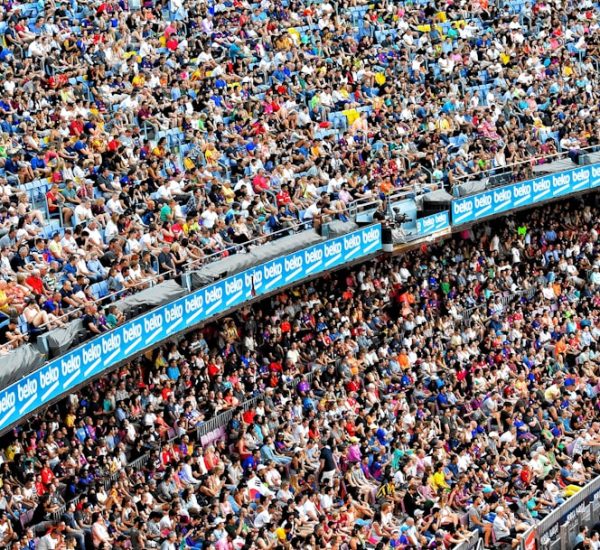For businesses focused on maximizing conversions and capturing attention in an ever-shrinking digital space, tools like Hello Bar have become essential. Designed to display banners at the top of a webpage for special offers or calls to action, Hello Bar holds significant potential for boosting user engagement. However, what many marketers and developers have realized is that aggressive banner implementations can inadvertently compromise mobile performance, turning a well-meaning promotional tool into a frustrating user experience.
TLDR: When Hello Bar’s top banner was introduced on mobile, it pushed key page content—especially the main call to action—offscreen, decreasing user interactions. The issue stemmed from the banner consuming precious vertical space without adapting to varied screen sizes. A responsive CSS fix helped maintain visibility of essential content and preserved clickthroughs. Optimizing banners for mobile responsiveness is crucial in ensuring consistent user engagement across devices.
The Hello Bar Mobile Dilemma
Hello Bar offers a visually dominant message at the top of a webpage. Typically, it’s used for promotions, newsletter signups, or limited-time offers. While this positioning is ideal for visibility on desktops, mobile screens posed a unique challenge: limited vertical real estate meant that even a small banner had a disproportionately large impact.
Early implementations of Hello Bar on mobile did not account for viewport differences. On devices with a screen height of less than 700 pixels, such as older iPhones or mid-tier Android devices, the banner would push critical page content—like a “Buy Now” or “Get Started” button—down and out of view. This meant the user had to scroll before interacting with the core offering. For landing pages designed to convert above the fold, this UX flaw became a significant barrier.
Impact on Clickthrough Rates
The impact was noticeable. In A/B tests conducted by several digital marketers:
- Pages with static Hello Bars: experienced up to a 22% drop in mobile clickthrough rates compared to the same pages without a banner.
- User heatmaps: showed that fewer users reached the call-to-action area within the first 3 seconds of page load—a known sweet spot for conversions.
- Bounce rates: increased when users were greeted with a banner but without immediate access to the content beneath it.
It became clear: fixing the visibility issue on mobile screens could substantially improve engagement and the perceived usability of the site.
Diagnosing the Problem
Upon inspection, the issue was largely a CSS and HTML structure problem. Hello Bar is injected into the DOM as an absolutely or fixed-positioned banner depending on settings. By default, it sits at the top of the viewport and wraps around the <body> element. On mobile, the following issues were observed:
- The banner height was fixed at values between 40px to 80px, creating a visual blockage.
- Content below the banner was not offset or padded to account for the new banner height.
- Worst of all, critical elements like H1s or CTAs were masked off the screen once the Hello Bar loaded—a jarring experience for users accustomed to instant visibility of a webpage’s value proposition.

Developer Insight
Frontend developers quickly realized that the solution wasn’t simply removing the banner but making it responsive. A quick patch included measuring and dynamically adjusting margin or padding values for key containers such as #main-content or .hero-section. But a more refined fix was needed.
The Responsive CSS Fix
To preserve the utility of Hello Bar while ensuring content remained accessible, a responsive CSS strategy was implemented. The idea was to calculate the banner height dynamically using JavaScript after the DOM loaded and adjust padding accordingly for smaller screen widths. Here is the simplified version of the steps taken:
1. Use a Media Query to Identify Mobile Views
@media only screen and (max-width: 768px) {
.hero-section {
padding-top: 100px; /* adjust based on actual Hello Bar height */
}
}
This ensured that on devices with narrower screens, the hero or primary content area received additional padding at the top. But since Hello Bar heights can vary (especially when customized), a static padding value wasn’t foolproof.
2. Dynamically Adjust Layout with JavaScript
window.addEventListener('load', function() {
const helloBar = document.querySelector('.hellobar-visible');
const heroSection = document.querySelector('.hero-section');
if (helloBar && heroSection) {
const barHeight = helloBar.offsetHeight;
heroSection.style.paddingTop = barHeight + 'px';
}
});
This script runs after the page loads and calculates the actual height of the Hello Bar, then applies that height as top padding to the hero section. The result is a seamless experience, with the CTA always visible regardless of the presence or size of the banner.
Preserving a Consistent User Experience
After deploying this fix, the mobile UX was restored. Users could see CTAs, headlines, and offer details immediately after the page loaded. The payoffs were measurable:
- Clickthrough rates rebounded to near pre-banner levels, showing only a negligible 2-3% difference even with the Hello Bar active.
- Users spent more time on the landing pages, especially in segments where the banner offered timed discounts or limited sign-up windows.
- Both SEO metrics and Core Web Vitals remained healthy, as layout shifts and scroll jank were minimized with the fix.
This underscores a broader principle in web design: promotional overlays and banners should complement—not compete with—the primary content of a page.
Best Practices Going Forward
This Hello Bar incident highlights the importance of thinking mobile-first in banner deployment strategies. Here are some recommendations to keep in mind when using top bars or similar visual banners:
- Test on real devices: Simulations don’t always catch layout issues—test your top-of-page elements on a variety of screen sizes and orientations.
- Use dynamic spacing: Avoid hard-coded margin or padding values. Responsive design requires flexibility and adaptation to real-time DOM changes.
- Apply progressive disclosure: Consider using collapsible or delayed banners on mobile to avoid visual overload when the page first loads.
- Measure and monitor: Regularly review clickthrough and engagement metrics specific to mobile vs desktop to detect unexpected anomalies.

Conclusion
While Hello Bar remains a powerful marketing tool, its mobile implementation—like all web components—must be evaluated within the context of real user behavior and screen limitations. The pushback of critical content in its initial format led to a decrease in user engagement that could have gone unnoticed without proper analytics monitoring. The responsive CSS and JavaScript fix showcased in this case study not only solved a problem but serves as a template for how developers and marketers can work together to optimize digital experiences that balance visibility, functionality, and responsiveness.
Ultimately, even small interface elements like banners can have oversized effects on performance. Building responsibly means accounting for all user experiences—not just those on a pristine desktop monitor. With the right approach, tools like Hello Bar can enhance rather than obstruct, and websites can perform beautifully across the entire ecosystem of screens.



